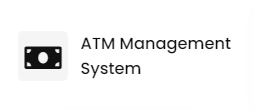Okay, so check this out—privacy in Bitcoin often gets billed like a toggle switch. Flip it on, and poof, you’re anonymous. Wow! That’s not how it works. My instinct said the same thing the first time I dug in: “Cool, mixing must hide everything.” Initially I thought that CoinJoin would be a silver bullet, but then I realized the reality is messier and more interesting.
Let’s be straight. Bitcoin’s ledger is public. Every input and output is recorded, forever. Short sentence. That transparency is what makes Bitcoin auditable and censorship-resistant, though actually—wait—it’s the same property that makes privacy hard. On one hand you want accountability; on the other, you want to keep your spending private. These goals clash in predictable ways.
CoinJoin is one of the best practical tools we have right now for improving on-chain privacy without changing Bitcoin’s rules. Seriously? Yes. At its core, CoinJoin combines multiple users’ payments into a single joint transaction, breaking trivial address-to-address links. Medium sentence here to explain: instead of Alice sending to Bob directly, Alice’s inputs are mixed with others’ inputs and outputs are shuffled, so mapping a particular input to a particular output becomes ambiguous. Longer thought: when enough participants and standardized output amounts are used, the anonymity set grows, making it significantly harder for an outsider to assert ownership with high confidence.
But—and this is big—CoinJoin is not magic. There are several practical and theoretical limits. Hmm… some adversaries can still make educated guesses. On one side you have on-chain heuristics that analysts use, like common-input-ownership heuristic, address clustering, and amount patterns. On the other side you have off-chain leaks, such as IP metadata, wallet behavior signatures, and interactions with services that require identity verification. So yeah, your privacy is a chain of links; the weakest link matters most.

How CoinJoin improves privacy — and where it falls short
CoinJoin helps by increasing ambiguity. Short. It raises the computational cost for chain analysis firms to trace coins through the blockchain. Medium sentence: when many people join a well-designed CoinJoin, the number of plausible mappings between inputs and outputs explodes, and that creates plausible deniability. Longer thought: however, if participants reuse addresses, or if outputs are unique amounts that can be fingerprinted, or if a user later consolidates mixed coins into a single transaction, the gains from mixing evaporate quickly because traditional heuristics can be reapplied.
Here’s what bugs me about simplistic privacy advice: people are told “just mix your coins” and then they think the job is done. That’s not right. You must combine safe post-mix practices with mixing itself. For example, moving mixed outputs directly to KYC exchanges or custodial services is basically handing your pseudonym back to the investigators. I’m biased, but that’s the part that trips most people up.
Another limitation is participation. CoinJoin works best when many participants join simultaneously and amounts are standardized. Wow! Fewer participants or unique denominations reduce the anonymity set. Also, timing matters. If your CoinJoin output is spent moments later, timing analysis narrows the field. So using mixed outputs thoughtfully is crucial.
Practical privacy hygiene — what to do and what to avoid
Becoming harder to trace is a practice, not a one-off. Short sentence. First: avoid address reuse. Medium: always generate a fresh receiving address for each counterparty or service, and don’t consolidate many mixed outputs into a single spend. Long: by keeping mixed outputs separate and spending them in ways that don’t create new obvious links, you preserve the ambiguity that CoinJoin bought you in the first place.
Second: think about off-chain privacy. If your wallet leaks your IP or if you use a custodial service that is forced to hand over records, on-chain privacy won’t help. Use good network hygiene—public Wi‑Fi is usually worse, and running a VPN doesn’t automatically solve everything. Also, devices and wallets have identifiable fingerprints; changing too many variables too quickly can actually draw attention. Hmm…
Third: be skeptical of “instant anonymity” claims. Companies sometimes advertise opaque mixing or tumbling services as offering perfect anonymity. Seriously? Many of those services aggregate coins and then redistribute them, but if they keep logs or get subpoenaed, your trail reappears. Use open-source, trust-minimized tools when you can.
Wasabi Wallet and trust-minimized CoinJoin
If you want a real-world tool that implements privacy best practices without handing control to a middleman, consider the wasabi wallet. It’s an opinionated, desktop-first Bitcoin wallet that integrates a Chaumian CoinJoin protocol and does so in a way that minimizes trust in any single party. Short sentence. Personally, I like that it embraces transparency: the code is open, the protocol is documented, and you can inspect how rounds are built. Medium sentence: that doesn’t mean it’s a perfect fit for everyone, because using it requires learning some new habits and accepting tradeoffs like coordination delays and fees. Longer thought: still, for people who care about on-chain privacy and want a community-vetted option, it’s one of the better places to start.
Now, a reality check. Using a privacy wallet doesn’t exempt you from legal risk if you plan to use Bitcoin for illicit purposes. I’m not here to advise hiding criminal activity. Think of these tools like locks and curtains—useful for everyday privacy and preventing casual targeting, but not a shield for bad actors.
Common deanonymization vectors to watch out for
Address reuse. Short. Consolidation transactions that combine many coins are big giveaways. Medium: dusting attacks, where tiny amounts are sent to your address to track whether you spend them, remain a cheap but effective reconnaissance trick. Long thought: once a dust input is traced to a later transaction, analysts can tie you into a cluster, so treating small, unsolicited inputs with caution is smart practice.
Another vector is timing and behavioral patterns. If you always mix at midnight Eastern and then spend at 9 AM, that’s a pattern. If your wallet software creates unique input ordering or scripts, it can fingerprint you. Hmm… my advice: vary behavior, don’t automate a single pattern, and learn your wallet’s quirks.
Finally, interactions with regulated services are crucial failure points. On one hand, privacy tools can reduce the risk of targeted surveillance. On the other hand, when you deposit to a KYC exchange, you often re-associate your on-chain history with real-world identity. That linkage is the most common reason “anonymity” doesn’t stick.
FAQ
Is CoinJoin legal?
Generally, yes—CoinJoin is a technique, not an inherently illegal act. Short answer. However, laws vary by jurisdiction and intent matters. Using privacy tools for lawful financial privacy is broadly acceptable in many places, but using them to facilitate crime could lead to legal consequences. I’m not a lawyer though, so consult one if you’re unsure.
Can chain analysis companies still deanonymize CoinJoin users?
They can sometimes. Medium sentence: sophisticated analysts use a mix of heuristics, large datasets, and off-chain signals to make probabilistic claims about ownership. Long: while CoinJoin raises the cost and complexity of tracing, it doesn’t make tracing impossible, especially if users make operational mistakes or interact with identity-linked services later on.
How often should I mix?
There’s no single answer. Short. For many privacy-conscious users, mixing when receiving funds from diverse sources or before sending to unfamiliar parties works well. Medium: frequency should match your threat model—higher risk means more frequent mixes. I’m not 100% sure of exact numbers for everyone; it’s contextual and depends on how you use Bitcoin.




















